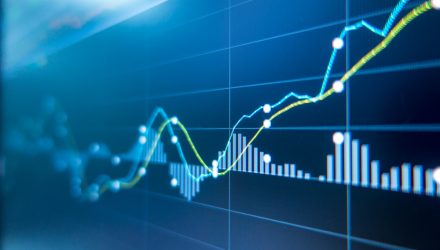The pandemic certainly put cash-strapped companies in a bind and meeting debt payments made it that much more difficult, resulting in defaults. As such, the U.S. high yield default rate is set to hit 5% in June, which would make it the first time since July 2016—a rise of 4.6% at May 31, according to a new Fitch Ratings report.
“Default volume tallied a heavy $32.7 billion over the past two months,” said Eric Rosenthal, Senior Director of Leveraged Finance. “The May default rate would have been higher if a few unsuccessful energy distressed debt exchange offers had come to fruition.”
The majority of the defaults were in the energy sector as companies like Chesapeake Energy and California Resources are facing bankruptcy with bond interest payments forthcoming. According to the report, the energy trailing 12-month default rate is at 11.1% but could reach 14% by the end of June and 17% by the end of the year.
For investors looking to get exposure to high yield without the duration risk can opt for exchange-traded funds (ETFs) like the Xtrackers Short Duration High Yield Bond ETF (SHYL). SHYL seeks investment results that correspond generally to the performance, before fees and expenses, of the Solactive USD High Yield Corporates Total Market 0-5 Year Index.
The fund will invest at least 80% of its total assets (but typically far more) in component securities of the underlying index. The underlying index is designed to track the performance of short-term publicly issued U.S. dollar-denominated below investment grade corporate debt.
Other High Yield Options
Investors looking to add additional high yield bond exposure to their ETF portfolios can look at the iShares iBoxx $ High Yield Corporate Bond ETF (HYG) and the SPDR Bloomberg Barclays High Yield Bond ETF (JNK). Both of these funds were part of the list of ETFs the Federal Reserve purchased to help backstop the bond market.
Investors wanting an active option can look at the PGIM Active High Yield Bond ETF (PHYL). PHYL seeks total return, through a combination of current income and capital appreciation.
Under normal market conditions, the fund invests at least 80% of its investable assets in a diversified portfolio of high yield bonds that are below investment grade and other investments (including derivatives) with similar economic characteristics.
It may invest in securities which are the subject of bankruptcy proceedings or otherwise in default as to the repayment of principal and/or interest at the time of acquisition by the fund or are rated in the lower rating categories or, if unrated, are in the judgment of the Subadviser of equivalent quality.
For more market trends, visit ETF Trends.








